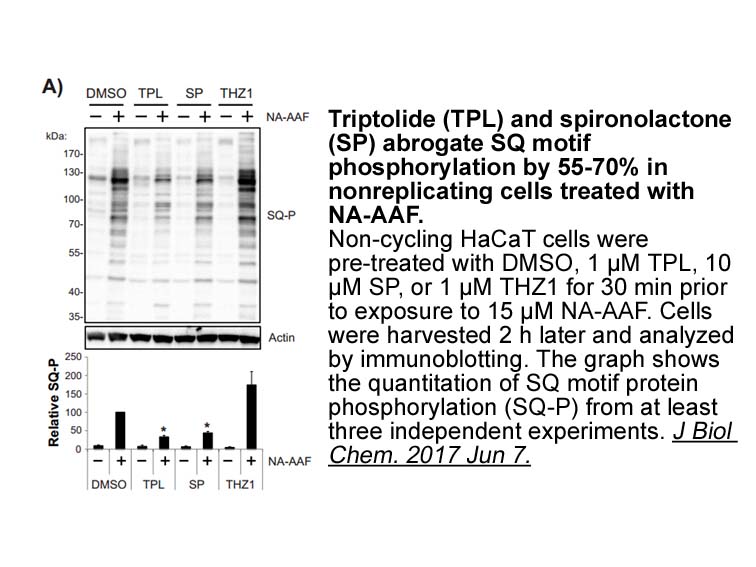Archives
br Concluding remarks br Introduction The
Concluding remarks
Introduction
The hair cerk of vestibular organs detect linear and rotational head movements, providing sensory information that is essential for normal postural and visual reflexes. Most vestibular hair cells are produced during embryonic development, but they can be lost later in life as a consequence of ototoxicity or as part of normal aging (humans: Merchant et al., 2000; Rauch et al., 2001; Lopez et al., 2005; mice: Park et al., 1987). Mature mammals possess a limited ability to replace hair cells after injury (e.g., Forge et al., 1993, Forge et al., 1998; Kawamoto et al., 2009; Lin et al., 2011; Golub et al., 2012), and their loss often results in permanent deficits in balance and equilibrium. In contrast, the vestibular organs of non-mammalian vertebrates can quickly regenerate lost hair cells, leading to restoration of sensory function (reviewed in Warchol (2011)). Such regenerated hair cells are derived from non-sensory cells called supporting cells, which reside alongside hair cells within the vestibular sensory epithelia. Supporting cells can form new hair cells, either by cell division or by direct phenotypic conversion (reviewed in Stone and Cotanche (2007)). Identification of the signals that control hair cell regeneration in non-mammalian vertebrates is an important step in the development of strategies to promote restoration of balance function in the human inner ear after injury or age-related pathologies.
During otic development, differentiation of sensory hair cells is modulated by the Notch pathway (reviewed in Kelley (2006)). Notch is a membrane-bound receptor that is activated by ligands expressed on adjacent cells (Kopan and Ilagan, 2009). During the development of the inner ear, nascent hair cells express Notch ligands that interact with receptors on neighboring progenitor and supporting cells, preventing those cells from adopting a hair cell fate. Transmission of a Notch signal requires two sequential proteolytic events. Following interaction with a Notch ligand (i.e., Delta or Jagged), the Notch receptor is first cleaved near its extracellular surface via the metalloprotease ADAM10 (van Tetering et al., 2009). Next, the intracellular portion of the receptor is cleaved by γ-secretase, permitting the Notch intracellular domain (NICD) to translocate to the nucleus and regulate gene expression (e.g., Kopan, 2012).
Genetic disruption of Notch signaling in the developing inner ear leads to the production of supernumerary hair cells (e.g., Haddon et al., 1998; Lanford et al., 1999; Yamamoto et al., 2006). Inhibition of γ-secretase signaling has a similar effect during inner ear development (e.g., Hayashi et al., 2008, Takebayashi et al., 2007; Doetzlhofer et al., 2009), and it significantly augments hair cell regeneration in the auditory organ (basilar papilla) of mature birds (Daudet et al., 2009, Stone and Rubel, 1999), the neuromasts of larval fish (Ma et al., 2008; Romero-Carvajal et al., 2015), and the vestibular organs of adult mice (Lin et al., 2011; Slowik et al., 2013). However, these studies left some questions unanswered. First, it is not clear that Notch is the critical or sole target of γ-secretase inhibition; other γ-secretase substrates besides Notch may also modulate hair cell regeneration. Further, effects of γ-secretase inhibitors in avian vestibular hair cell regeneration have not been tested.
The present study examin ed the role of γ-secretase or ADAM10 in the mature chicken utricle, a vestibular organ that detects linear acceleration. During regeneration, we found that inhibition of either protease resulted in a dramatic increase in hair cell differentiation, indicating that Notch-dependent lateral inhibition regulates hair cell fate decisions during regeneration. Inhibition of γ-secretase or ADAM10 after hair cell destruction also increased the proliferation of supporting cells, pointing to an important role for these enzymes in regulating cell cycle entry. Moreover, inhibition of either enzyme evoked a robust proliferative response in the undamaged utricle, suggesting that activation of both γ-secretase and ADAM10 is necessary for maintaining supporting cells in a quiescent state. Although such regulation is likely mediated by Notch signaling, transcriptional profiling by RNA sequencing identified other substrates that may also influence cell cycle entry.
ed the role of γ-secretase or ADAM10 in the mature chicken utricle, a vestibular organ that detects linear acceleration. During regeneration, we found that inhibition of either protease resulted in a dramatic increase in hair cell differentiation, indicating that Notch-dependent lateral inhibition regulates hair cell fate decisions during regeneration. Inhibition of γ-secretase or ADAM10 after hair cell destruction also increased the proliferation of supporting cells, pointing to an important role for these enzymes in regulating cell cycle entry. Moreover, inhibition of either enzyme evoked a robust proliferative response in the undamaged utricle, suggesting that activation of both γ-secretase and ADAM10 is necessary for maintaining supporting cells in a quiescent state. Although such regulation is likely mediated by Notch signaling, transcriptional profiling by RNA sequencing identified other substrates that may also influence cell cycle entry.